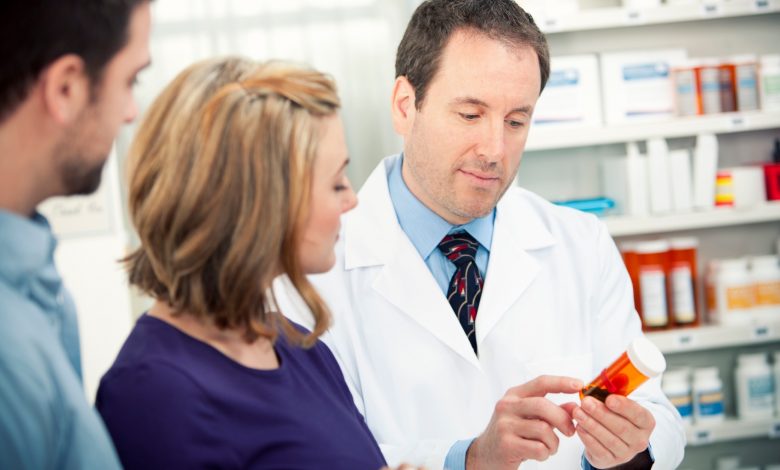How Safe Are Bladder Medications?

The urinary bladder is a temporary storage reservoir for urine. It is located in the pelvic cavity, posterior to the symphysis pubis, and below the parietal peritoneum. The size and shape of the urinary bladder vary with the amount of urine it contains and with the pressure it receives from surrounding organs.
Bladder control problems affect the way a person holds or releases urine. A person has urinary incontinence (UI) when urine leaks accidentally. You may have a bladder control problem if you often feel a sudden urge to go to the bathroom or if you leak urine during normal activities.
Bladder control medications
There are several medications used in the treatment of bladder control problems. According to Mayo Clinic, the following are the prescribed medication used to treat urinary incontinence and their possible side effects. Keep in mind that medication combined with behavioral treatment might be more effective than medication alone.
Anticholinergics
How they work
Anticholinergic drugs block the action of a chemical messenger — acetylcholine — that sends signals to your brain that trigger abnormal bladder contractions associated with an overactive bladder. These bladder contractions can make you feel the need to urinate even when your bladder isn’t full.
Anticholinergic medications include:
- Oxybutynin (Ditropan XL, Oxytrol)
- Tolterodine (Detrol)
- Darifenacin (Enablex)
- Solifenacin (Vesicare)
- Trospium
- Fesoterodine (Toviaz)
These medications are usually given as a pill or tablet that you take by mouth. Oxybutynin is also available as a cream or skin patch that delivers a continuous amount of medication.
It can take several weeks before your symptoms begin to improve on this type of medication. It might take 12 weeks to have the full effect.
Side effects
The most common side effects of anticholinergics are dry mouth and constipation. An extended-release form, which you take once a day, might cause fewer side effects than the immediate-release versions, which are usually taken multiple times a day.
To counteract dry mouth, try sucking hard candy or chewing gum to produce more saliva. Other less common side effects include heartburn, blurry vision, rapid heartbeat (tachycardia), flushed skin, urinary retention, and cognitive side effects, such as impaired memory and confusion.
If you use the oxybutynin skin patch, it might cause skin irritation. Your doctor might suggest that you rotate the location of your patch.
Mirabegron (Myrbetriq)
How it works
Mirabegron is a medication approved to treat certain types of urinary incontinence. It relaxes the bladder muscle and can increase the amount of urine your bladder can hold. It might also increase the amount you are able to urinate at one time, helping to empty your bladder more completely.
Side effects
Some common side effects of mirabegron include nausea, diarrhea, constipation, dizziness, and headache. It can increase blood pressure, so your blood pressure should be monitored while on this drug.
In addition, it interacts with various medications, so make sure your doctor knows which medications you’re taking before you begin taking mirabegron.
Onabotulinumtoxin type A (Botox)
How it works
Injections of Botox into the bladder muscle might benefit people who have an overactive bladder. Botox blocks the action of acetylcholine and paralyzes the bladder muscle.
Botox might be helpful for people who haven’t responded to other medications. Benefits can last several months. Your doctor might recommend repeat injections once or twice a year.
Side effects
Studies have found that Botox significantly improves symptoms of incontinence and causes few side effects. Some research indicates it may increase urinary tract infections, but the data aren’t conclusive.
The Food and Drug Administration (FDA) warns that adverse reactions including respiratory arrest and death may occur after the use of Botox for both approved and unapproved uses.
Estrogen
How it works
After menopause, a woman’s body produces less estrogen. These drops in estrogen may contribute to the deterioration of the supportive tissues around the bladder and urethra, weakening the tissues and potentially aggravating stress incontinence.
Applying low-dose, topical estrogen in the form of a vaginal cream, an estrogen-containing ring or a patch may help rejuvenate deteriorating tissues in the vagina and urinary tract and relieve some incontinence symptoms.
Topical estrogen might not be recommended if you have a history of breast cancer, uterine cancer, or both. Talk with your doctor about the potential risks.
Combination hormone replacement therapy (estrogen plus progestin) isn’t the same as topical estrogen and is no longer used to treat urinary incontinence. Oral estrogen replacement also is not the same as topical estrogen, and it might worsen incontinence symptoms.
Side effects
When used correctly, topical estrogen therapy typically doesn’t cause side effects.
Imipramine
How it works
Imipramine (Tofranil) is a tricyclic antidepressant. It makes the bladder muscle relax while causing the smooth muscles at the bladder neck to contract. It may be used to treat mixed incontinence — a combination of urge and stress incontinence.
Imipramine can cause drowsiness, so it’s often taken at night. Because of this, imipramine may be useful for nighttime incontinence, as well. It may also be helpful for children who bed-wet at night (nocturnal enuresis). Imipramine is usually not a good fit for older adults.
Side effects
Serious side effects from imipramine are rare but can include cardiovascular problems, such as irregular heartbeat and dizziness or fainting from reduced blood pressure when you stand up quickly. Children and older adults may be especially susceptible to these side effects.
Other side effects, including dry mouth, blurry vision, and constipation, are similar to those of anticholinergics. Tricyclic antidepressants interact with various medications, so make sure your doctor knows the other medications you’re taking.
Duloxetine
How it works
Duloxetine (Cymbalta) is a serotonin and norepinephrine reuptake inhibitor that is approved to treat depression and anxiety. It can help the urethral sphincter relax, so it can improve urinary incontinence in some women. It might be especially helpful for women who have urinary incontinence and depression.
Side effects
Side effects of duloxetine can include nausea, dry mouth, dizziness, constipation, insomnia, and fatigue. Women who have chronic liver disease should not take duloxetine. Be sure your doctor knows your full medical history before you begin using this drug.
What medications cause overactive bladder?
Overactive bladder is a combination of symptoms that can cause you to need to urinate more frequently, have more urgency, experience incontinence (leakage), and a need to urinate at night. Causes can include weak muscles, nerve damage, and the use of medications, alcohol, or caffeine. Medications that can cause an overactive bladder to include:
- ACE inhibitors
- Alpha-blockers
- Antidepressants
- Antipsychotics
- Calcium channel blockers
- Loop diuretics
- Nonsteroidal anti-inflammatory drugs
- Oral estrogens
- Sedative-hypnotics
Which overactive bladder medication has the least side effects?
Generally, the side effects of overactive bladder medication are people-dependent. The fact that one person experiences a particular side effect does not mean you will also experience the same. Nevertheless, Oxytrol (Oxybutynin) for women is considered one of the safest overactive bladder drugs and it is the only medication available over the counter.
How to get rid of a bladder infection without medication?
According to Healthline, the following remedies can help with the management of an overactive bladder:
- Chinese herbal blends: Gosha-jinki-gan (GJG) is a blend of 10 traditional Chinese herbs. Several studies have been done on this herbal blend, and researchers found that GJG inhibits the bladder and significantly improves daytime frequency. People who took 7.5 milligrams of GJG a day also reported better results on their International Prostate Symptom Score (IPSS), which records urinary symptoms. Another Chinese herbal medicine is Hachimi-jio-gan (HE). HE is made up of eight natural ingredients, some of which are also in GJG. Preliminary studies show that HE may have an effect on bladder muscle contraction.
- Ganoderma lucidum (GL): Also known as lingzhi mushroom, this extract from East Asia is used to cure many ailments including hepatitis, hypertension, and cancers. In a randomized study, 50 men reported better scores for IPSS. This study recommends 6 milligrams of GL extract in men with lower urinary tract symptoms.
- Corn silk (Zea mays): This is the waste material from corn cultivation. Countries from China to France use this as a traditional medicine for many ailments, including bedwetting and bladder irritation. It may help with strengthening and restoring mucous membranes in the urinary tract to prevent incontinence, according to the International Continence Society.
- Capsaicin: This is found in the fleshy part of Chile peppers, not the seeds. It’s commonly used to treat pelvic pain syndrome, which is often a symptom of OAB. Studies have found that peak bladder capacity increased from 106 milliliters to 302 milliliters.





